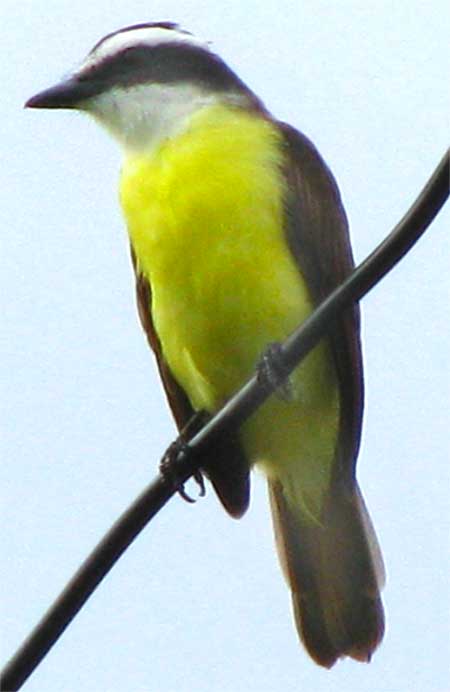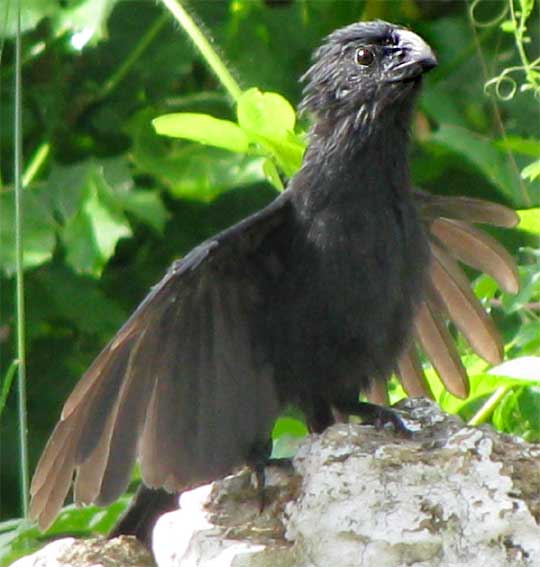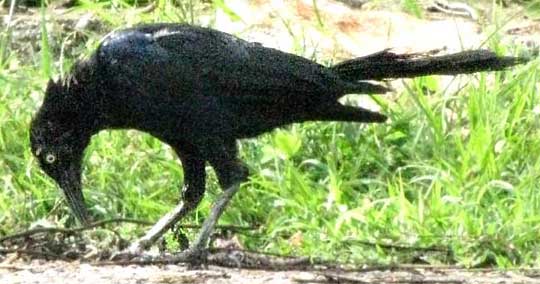Excerpts from Jim Conrad's
Naturalist Newsletter
from the September 29, 2008Written in Sabacché and issued from a ciber in nearby Tekit, Yucatán, MÉXICO
BIRD FEAST, COURTESY OF ARMY ANTS
Last Monday our rainy-season drought came to an end; suddenly the weather is exactly as it should be, most mornings very humid and fairly cloudy, storms building in the afternoons, a brief electrical storm around 4 PM, then drizzle on and off, sometimes heavy rains coming out of nowhere in early evening. Saturday morning after a night of showers as I returned from jogging at dawn it was so cool -- 74° F (23° C) -- that men were wearing their sweatshirts.
The Maya say that rains make the ants move, and that seems to be the case. They're referring to army ants, which we've often seen before. Several army-ant stories are linked to on my Mexican Insects page at https://www.backyardnature.net/mexnat/mex-bug.htm.
So, Saturday morning as I was hiking out of town I paused along the road to figure out why in that spot several birds seemed to be hanging around. Then came that too-familiar burning, stinging sensation down at the feet: I was standing in a river of army ants.
As soon as I pulled off each ant individually and scratched my ankles a bit, I hid behind a nearby rock and waited. Soon the birds I'd seen earlier returned, for the army ants had been providing them with a feast. Best I can ever see, the birds just try to stay out of the ants' way. What they like is that before the advancing streams of ants always there's a mad rush of potential ant prey -- grasshoppers, spiders, tarantulas, scorpions -- abandoning their usual hideouts, which the ants inevitably discover. These fleeing victims make easy meals.
First returned a Social Flycatcher who perched on an electrical line until something good appeared. Then he'd dive, do a second or two of battle, fly back to the wire, finish swallowing, then he'd wait again, and again and again. You can see him waiting below:

Second came three Groove-billed Anis. At first they weren't sure I was a rock and perched gawking at me on a nearby stone wall. One thought that while he was there he'd avail himself of the warm morning sunlight by spreading his wings against it to dry himself from the night's rains. That's the shaggy-looking basker below:

Last to come was a yellow-eyed Great-tailed Grackle with a not-too-great tail, who landed among the ants and ran from place to place, sometimes doing a little dance, apparently trying to shake off ants, shown below:
